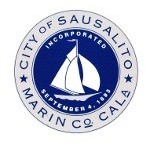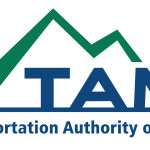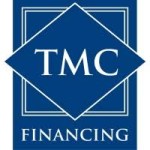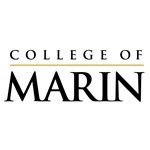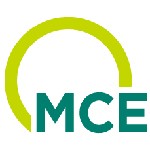Marin County unveils first long-term plan for economic development
A plan for helping grow Marin’s economy and recover from the COVID-19 pandemic was approved by county supervisors Tuesday.
“I’m excited to present the first ever, long-term economic plan for the county of Marin,” County Administrator Matthew Hymel said.
The “Marin Economic Vitality Strategic Plan” was paid for with a $133,000 federal grant and a little over $32,000 in county money. It was created over a 10-month period by the Marin Economic Forum with the help of the consulting group James Gollub Associates.
The Marin Economic Forum is a nonprofit, public-private partnership designed to foster local economic growth. It is funded by the county of Marin, contributions from businesses and individuals, and revenue generated from economic reports prepared by the forum.
The creators of the strategic plan identified six targeted industries they believe most likely to deliver job and revenue growth in Marin County over the next three to five years. These industries are life sciences; information technology/multimedia; tourism and hospitality; health care and aging; climate-related enterprises; and a new category referred to as “remote work opportunity.”
“We need to align our training to where those target industries are because they are where the growth is going to occur in occupations,” said Mike Blakeley, CEO of the Marin Economic Forum. “They also have middle wage and higher-wage jobs, which is where we need to see job creation in Marin County.”
The plan also recommends the pursuit of five flagship initiatives to grow the Marin economy: expanding and integrating the county’s workforce infrastructure; increasing the size of the county’s entrepreneurial ecosystem; fostering the growth of climate solutions and climate-related enterprises; increasing economic mobility for county residents; and formalizing countywide economic development activities.
Blakeley said that unlike every other county in California, with the exception of Napa, Marin lacks a publicly funded economic development staff. He said that made responding to the economic impact of the pandemic challenging for Marin.https://newsletter.northbaybusinessjournal.com/framed/single/c6bdac59c59c08fe3f95c862b7180b67?pref=nbbj_marin&hideImage=1&padCopy=0&fid=7708
“We knew that we needed to be a little more intentional about how our economy was going to recover and what it meant for us in the future,” Blakeley said. “Our organization pitched the idea of creating a long-term strategy that would not only look at recovery but also setting the economy up for the longer term.”
In addition to laying out a long-term growth strategy, the new plan also includes an evaluation of the impact of the pandemic on local businesses and how well the economy has recovered.
According to the plan, commercial vacancies increased during the pandemic, leaving some Marin downtowns with vacant street front properties. Foot traffic in some downtown areas has not recovered, hurting businesses that rely on in-person consumption.
Downtown business districts and main streets, with a high proportion of in-person, locally serving markets, remain at risk to economic shocks, including current inflationary pressures.
The plan states that staffing continues to be difficult, with lower wage jobs the hardest to fill, in part due to Marin’s small workforce able to accept wages that are lower than the “living wage” of $24 per hour. Other factors such as supply chain disruption, inflation and increased consumer preferences for online consumption have created an air of uncertainty for small businesses challenging their planning and investment.
Nevertheless, the plan found that Marin’s economy has bounced back from the pandemic faster than the economy of four similar counties: San Luis Obispo, on the central coast; Kitsap County, Washington; Boulder County, Colorado; and Westchester County, New York.
“We’ve recovered well, especially relative to our counties that we benchmarked against,” Blakeley said. “What we found was Marin recovered jobs faster, that our health impacts were lower and that our sales tax revenues recovered faster.”
Nevertheless, Blakeley said the plan includes some shorter-term actions that can be taken to help Marin’s economy recover more fully from the pandemic. Each of the flagship initiatives feature several action items.
Blakeley said one such action would be to expand existing training programs to provide more openings for residents displaced by the pandemic.
“The Marin Builders Association has one for the trades. The hospitals have them for health care. Community Action Marin just started one for Vivalon drivers,” Blakeley said.
Another short-term action, Blakeley said, would be for the county to provide matching grants to local municipalities and chambers of commerce to boost economic vitality.
Hymel said, “We have talked with the cities and towns about being open to economic development matching grants to help support their efforts.”
Hymel said the county has set aside $600,000 in federal COVID-19 relief funds that it received for economic development, some of which could be used for this purpose.
One longer term action suggested in the plan is the creation of a private company, similar to SRI International in Menlo Park, that could help Marin residents commercialize innovative ideas and technologies.
“Marin has had some successes with individuals who have created companies,” consultant James Gollub told supervisors, “but what you don’t have that your competitors have is institutions that prime the pump, that create the innovative ideas and do the commercialization.”
Another long-term action recommended in the report is the establishment of an agency similar to MCE, formerly known as Marin Clean Energy, to aggregate demand across Marin for large-scale climate change projects.
Chris Yalonis, president and founder of VenturePad, a cowork and meeting center located in San Rafael, said, “An example of a particular project that would be shovel ready would be the electrification of our buildings.”
Be the first to receive updates and news from MEF by subscribing or liking us on our social media pages: Facebook, Twitter, and LinkedIn!
Tags: news



